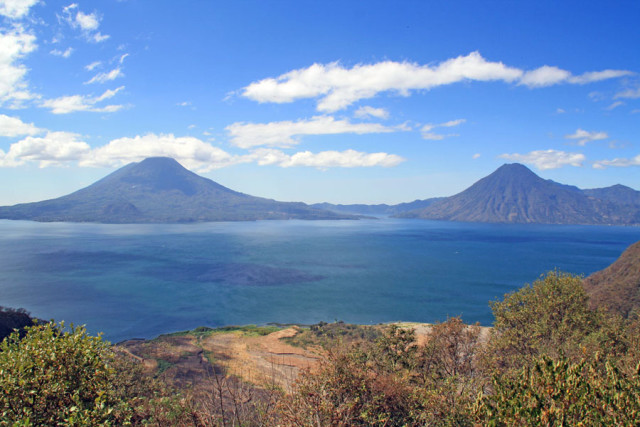Central America's largest and perhaps most diverse country has many dramatic spots that evoke a marked sense of place - the spectacular Mayan ruins of Tikal; the colonial splendour of Antigua; the castaway Caribbean vibe of Livingston; and much more. But Lake Atitlán, in the highlands a 2 1/2-hour drive north of Guatemala City, does that and more - it evokes something akin to an interior emotion and energy, a soaring of the soul, even a sense of the sublime.
Among those who know these things, Central America's deepest lake (340 metres/1,120 feet) is widely considered one of the world's loveliest lakes, as well as one of its most spiritual. There's evidence that there was once an island here that was a religious ceremonial centre in the pre-classical period of Mayan civilisation - called Samabaj after its recent local discoverer and dubbed by National Geographic "the Mayan Atlantis"; just being studied now, its secrets have yet to be completely unveiled.
Above water, however, there's plenty to see, do, and all around experience. Part of Atitlán's charisma derives from its trio of perfectly conical volanoes rising lakeside: the eponymous Atitlán, Tolimán, and San Pedro, silvery blue and surrounded by towns and villages. Panajachel is the largest, while the others include San Pedro La Laguna, San Juan La Laguna, Santa Clara La Laguna, Santiago Atitlán, Santa Catarina, San Antonio, Santa Cruz la Laguna, Sololá, and San Marcos la Laguna.
It's this last which can be considered perhaps the most spiritual of Guatemala's currently populated towns, in a New-Age kind of way; hundreds of visitors come to experience the likes of yoga, tantric yoga, reiki, music therapy, and other alternative coolnesses, yet San Marcos still manages to remain a laid-back town. And it, along with the lake's main tourism hub Panajachel, can serve as an excellent base of operations, with plenty of accommodation and eating options.
From both, water taxis and excursion boats leave for various other communities, particularly Santiago Atitlán to visit the church of Santiago Apóstol and discover the cult of Maximón (above, a modern Mayan/Catholic syncretic tradition); visit Sololá's untouristy Mayan market; hike up to La Nariz del Indio (Indian's Nose) peak, between Santa Clara and San Juan; hike up San Pedro Volcano; or simply relax (or meditate) on the shores of this 20-kilometre-long (12 1/2-mile) lake.
All of the above communities, by the way, are populated by Mayans, various ethnicities of the civilisation that built mighty Tikal and the other astonishing ancient cities of Central America and southern Mexico. And as such, they offer visitors a fascinating window into different aspects of the local culture that leave them deeply impressed. Another remarkable side of the Mundo Maya that's a must.

Comments